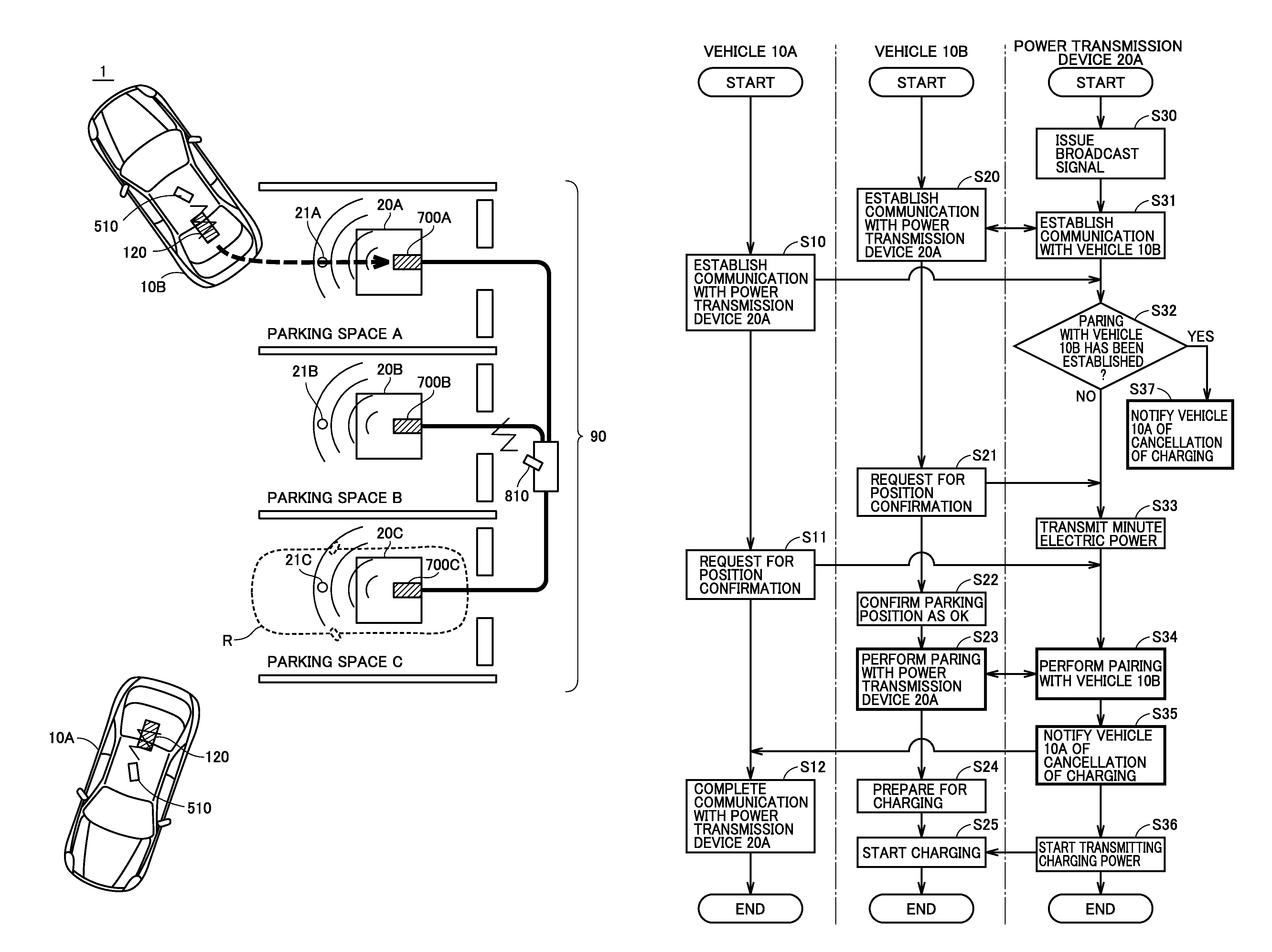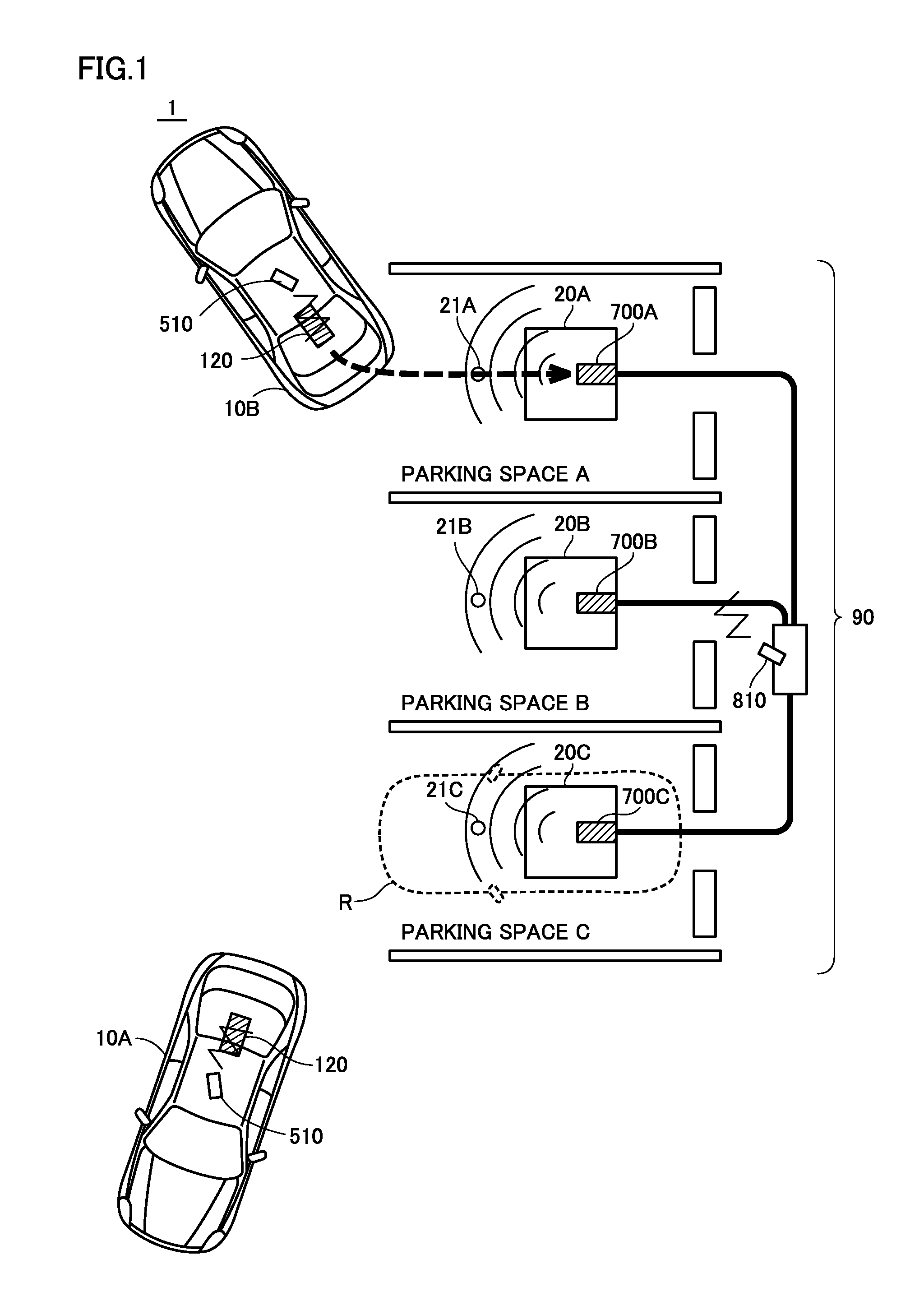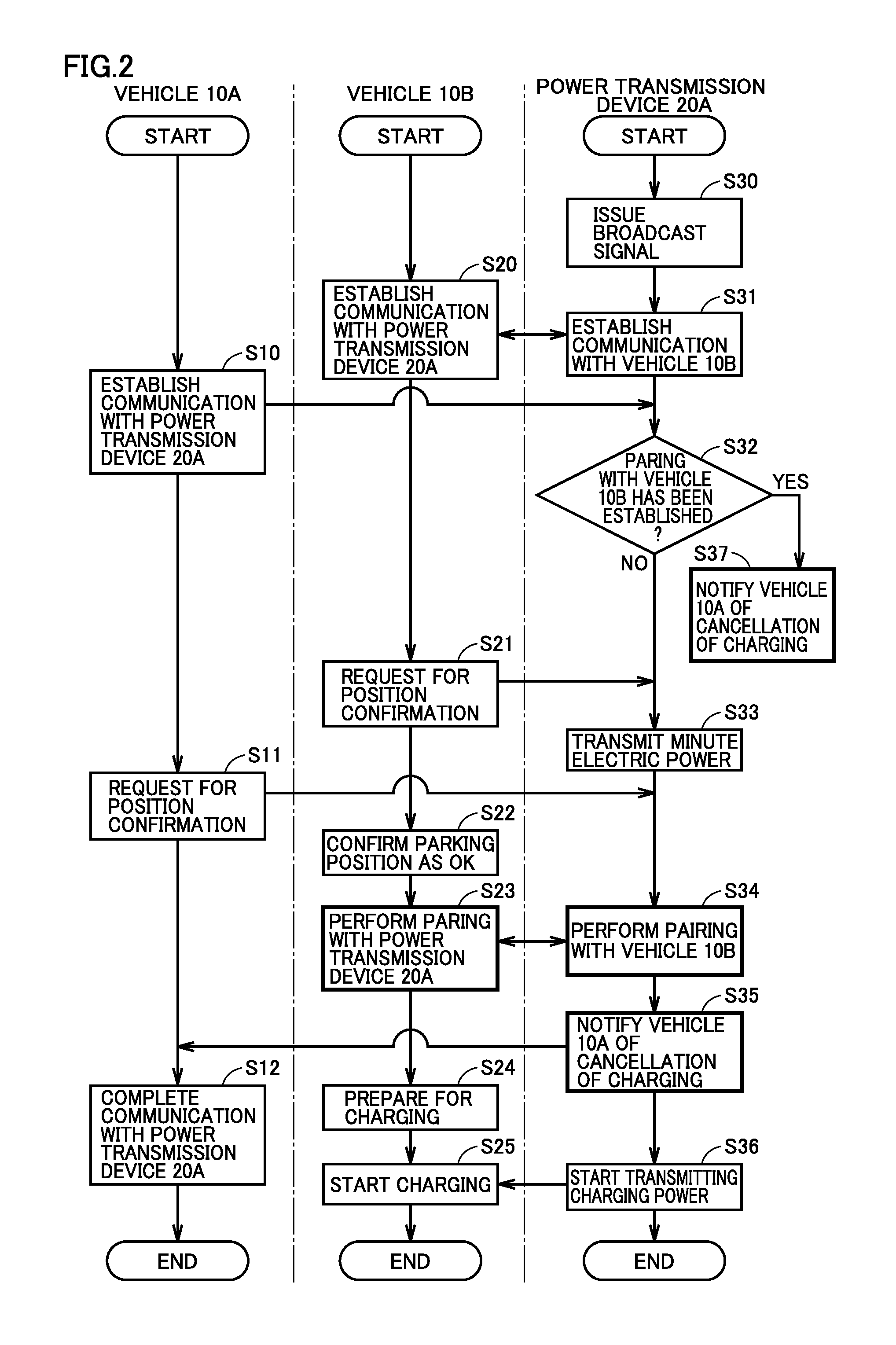Contactless charging system, charging station, and method of controlling contactless charging system
a charging system and contactless technology, applied in charging stations, electric vehicle charging technology, transportation and packaging, etc., can solve the problems of not being able to understand how many vehicles and not being able to solve problems
- Summary
- Abstract
- Description
- Claims
- Application Information
AI Technical Summary
Benefits of technology
Problems solved by technology
Method used
Image
Examples
Embodiment Construction
[0017]An embodiment of the present invention will be hereinafter described in detail with reference to the accompanying drawings, in which the same or corresponding components are designated by the same reference characters, and description thereof will not be repeated.
[0018]FIG. 1 is a diagram for illustrating a contactless charging system 1 according to the embodiment.
[0019]Referring to FIG. 1, in contactless charging system 1, contactless power transfer is carried out from a charging station 90 to a vehicle 10A and / or 10B. For example, when vehicle 10A is to be charged through the contactless power transfer, vehicle 10A is parked in one of parking spaces A to C.
[0020]First, vehicle 10A will be described. Vehicle 10A includes a power reception device 120 and a communication unit 510.
[0021]Power reception device 120 is used for charging (for example, a battery of) vehicle 10A. Power reception device 120 is mounted in the lower part (for example, near a bottom surface) of vehicle 10...
PUM
 Login to View More
Login to View More Abstract
Description
Claims
Application Information
 Login to View More
Login to View More - R&D
- Intellectual Property
- Life Sciences
- Materials
- Tech Scout
- Unparalleled Data Quality
- Higher Quality Content
- 60% Fewer Hallucinations
Browse by: Latest US Patents, China's latest patents, Technical Efficacy Thesaurus, Application Domain, Technology Topic, Popular Technical Reports.
© 2025 PatSnap. All rights reserved.Legal|Privacy policy|Modern Slavery Act Transparency Statement|Sitemap|About US| Contact US: help@patsnap.com



